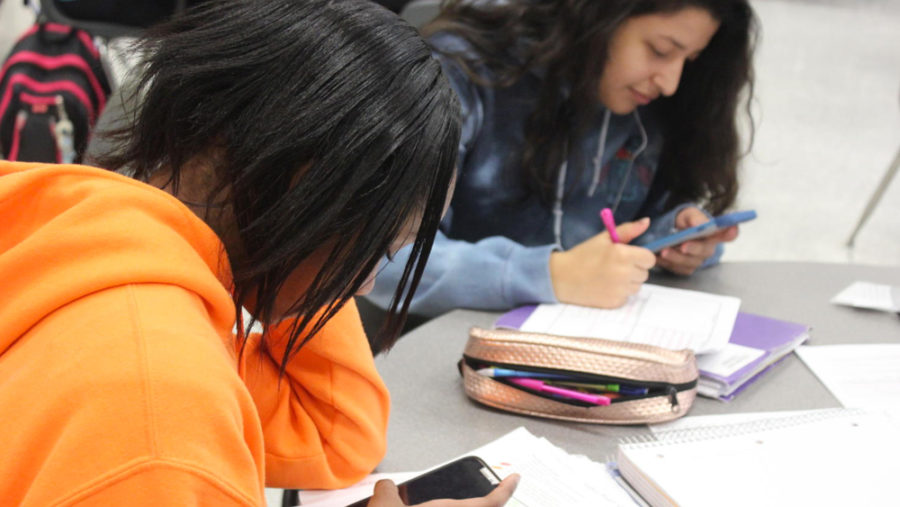Technology Continues to Change Classroom Experience
With the school’s Bring Your Own Technology policy encouraging students to carry their devices, teachers and students see the benefits and distractions of cell phone accessibility in the classroom
Today’s youth is all about seeing the latest Instagram posts, tweets, or how many likes their pictures got; however, teenagers are also beginning to use technology for educational purposes. Teens are using apps such as Quizlet, Remind, Google Classroom, Duolingo, and even Youtube for studying, homework help, or catching up on what they missed while they were absent. These apps and programs are replacing the need to buy flashcards, read old textbooks, or take notes. Why? Because they do everything for them.
“Quizlet is my go app for flashcards, so I believe it to be very helpful. I am also using Duolingo for my foreign language class and Khan Academy,” said sophomore Rachel Sedlak.
Thanks to the school’s BYOT policy, which condones students to bring their own technology to school, students can use their electronic devices in class for classroom activities, and during CORE for help on assignments.
If students need help, they can use their phones to email teachers, watch a youtube video, or go on Khan Academy, a website that has video lectures and practice materials, has been recommended by many teachers.
“I believe technology is helping with homework because [it] helps enrich people’s understanding,” said sophomore Jeremy Kazmi.
According to a study by Stanford University, replacing teachers with technology is not a successful formula. Instead, strong gains in achievement occur by pairing technology with classroom teachers who provide real-time support and influence to students; however, many teachers are starting to use to use technology to help their students and have noticed that it has a positive impact on their students.
“It’s a good thing we have the Promethean boards because it gives us so many advantages veruses just having the black board. Students can go up and really engage in writing as well,” said Spanish teacher Giselle Schneider.
Technology gives students the opportunity to stay engaged even outside of the classroom. Apps like Duolingo help with foreign language courses. According to their website, their app can “give each student personalized feedback and practice, preparing them to get the most out of classroom instruction.”
Quizlet’s popularity is growing as it allows students to create online flashcards, practice spelling, play educational games, test their knowledge, and collaborate with other students.
“Quizlet is great. What I do is, when students don’t do so well on the quiz, I give them the Quizlet, but when I see that a students did not do well on the quiz and did not complete the Quizlet, I make them do all the steps of the Quizlet,” said German teacher Radhika Lothe.
In contrast to its sanguine outcomes, technology also has a downfall. Although many students find it useful for classwork, projects, and homework, students have also said that they find their devices distracting due to the accessibility of social media apps, games, or texting.
“Technology is a distraction because I would so much rather watch Netflix than do homework,” said sophomore Lillian Chiang.
At times, teachers become frustrated with technological devices because students seem more concerned about what is on their phones than what is being taught in class. Students prefer to participate in group chats on iMessage instead of group discussions in the classroom. Furthermore, students have been caught using their devices as a way to cheat through tests and exams.
“Last year, every single day at the beginning of class, I had to tell my students to put their cell phones away in their backpacks and not in their pockets. Why not in their pockets? Because in their pockets, they could feel the vibration and that’s an automatic distraction,” said Schneider. “And unfortunately last year, I caught about four students cheating.”
Technology has its advantages and disadvantages. Although it can be helpful, it can also lead students to failure. Students must know how to control themselves with their electronic devices and have good time management skills — knowing when to study and when to be on their phones.
“You could give a student the best technology, and it will not do anything for them. If a students really wants to learn, they will find a way,” said Lothe.


